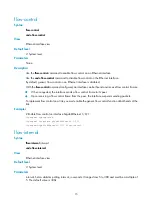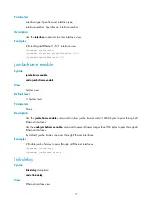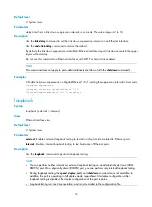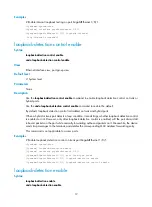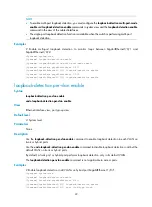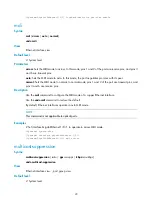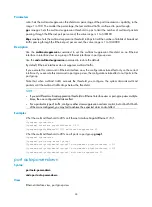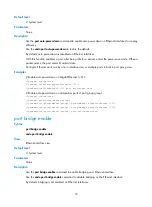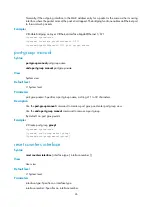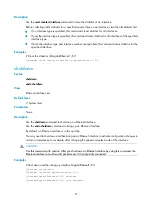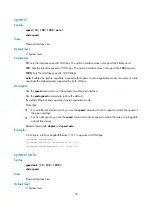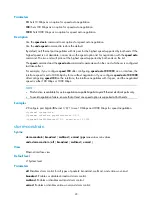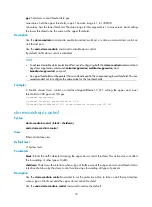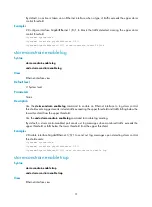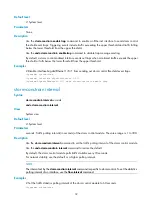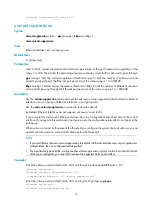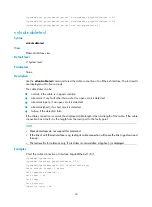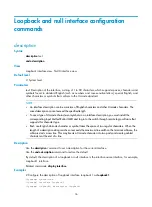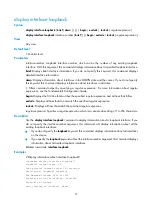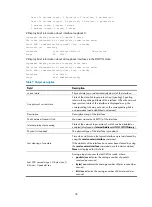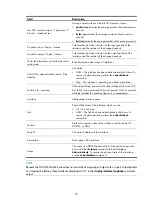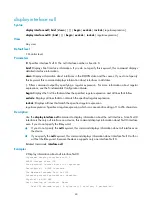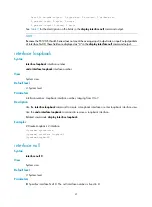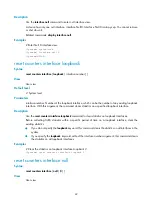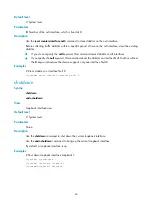
29
Parameters
10:
Sets 10 Mbps as an option for speed auto negotiation.
100:
Sets 100 Mbps as an option for speed auto negotiation.
1000:
Sets 1000 Mbps as an option for speed auto negotiation.
Description
Use the
speed auto
command to set options for speed auto negotiation.
Use the
undo speed
command to restore the default.
By default, an Ethernet port negotiates with its peer for the highest speed supported by both ends. If the
highest speed is not desirable, narrow down the speed option list for negotiation with the
speed auto
command. The two ends will pick out the highest speed supported by both ends on the list.
The
speed
command and the
speed auto
command supersede each other, and whichever is configured
last takes effect.
For example, if you configure
speed 100
after configuring
speed auto 100 1000
on an interface, the
interface speed is set to 100 Mbps by force without negotiation. If you configure
speed auto 100 1000
after configuring
speed 100
on the interface, the interface negotiates with its peer, and the negotiated
speed is either 100 Mbps or 1000 Mbps.
NOTE:
•
This function is available for auto-negotiation-capable Gigabit Layer-2 Ethernet electrical ports only.
•
To avoid negotiation failure, ensure that at least one speed option is supported at both ends.
Examples
# Configure port GigabitEthernet 1/0/1 to use 10 Mbps and 1000 Mbps for speed negotiation.
<Sysname> system-view
[Sysname] interface gigabitethernet 1/0/1
[Sysname-GigabitEthernet1/0/1] speed auto 10 1000
storm-constrain
Syntax
storm-constrain
{
broadcast
|
multicast
|
unicast
}
pps
max-values min-values
undo storm-constrain
{
all
|
broadcast
|
multicast
|
unicast
}
View
Ethernet interface view
Default level
2: System level
Parameters
all
: Disables storm control for all types of packets: broadcast, multicast, and unknown unicast.
broadcast
: Enables or disables broadcast storm control.
multicast
: Enables or disables multicast storm control.
unicast
: Enables or disables unknown unicast storm control.

